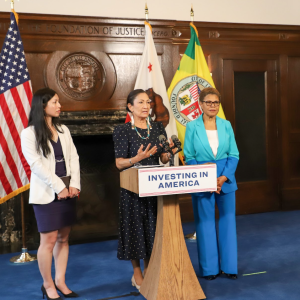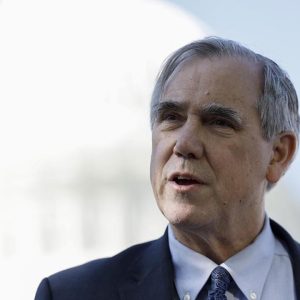 View Winners →
View Winners → Pasadena Unified’s FY2018-19 Budget is Balanced and Set for Approval


Following a very challenging fiscal year, the district’s FY2018-19 budget is balanced thanks to one-time state discretionary grant funding and millions of dollars’ worth of reductions. – Screenshot courtesy KLRN
Structural deficit still looms – deficit spending projected by FY2019-20
By Gus Herrera
The Pasadena Unified School District (PUSD) Board of Education recently held a special meeting to review the upcoming FY2018-19 budget, which is balanced and set to be approved on June 28.
Following a very challenging fiscal year in which the District began with a $5.7 million deficit – a deficit which triggered intervention from the Los Angeles County Office of Education (LACOE) and required the adoption of an emergency fiscal stabilization plan to restore the district’s required reserves – the FY2017-18 ending fund balance is expected to be approximately $15.5 million, according to Interim Chief Business Officer Eva Lueck.
This balance, which totals out to a 5.7 percent reserve (surpassing the required three percent reserve), was hard-earned through millions of dollars’ worth of difficult reductions, including the elimination of 95 certificated and classified full-time equivalent positions.
This time next year, the district is also projected to conclude with a positive ending balance of $12.73 million, thanks, in part, to one-time state discretionary grant funding of $344 per student.
But, the PUSD’s fiscal stability will be short-lived, as the district remains in a structural deficit and is projected to require additional expenditure reductions and/or revenue increases in order to maintain current programs and required reserves by FY2019-20.
Two of the largest contributing factors to the structural deficit are increased retirement contributions and a projected decrease in student enrollment.

Interim Chief Business Officer Eva Lueck revealed that the district is projecting a decrease of 376 students next year, a number which is “higher than normal” and mostly “due to the expansion of a charter school.” – Screenshot courtesy KLRN
California State Teachers’ Retirement System (CALSTRS) contributions will increase by 1.85 percent (16.28 percent total) and California Public Employees’ Retirement System (CALPERS) by 2.53 percent (18.06 percent total). From the District’s perspective, these increases are the equivalent of giving their certificated and classified employees a raise and are a “significant cost increase,” but employees do not receive any immediate benefit.
“This is a cost for compensation that we’re paying, but it’s really not money they’re going to see in their pocket to pay bills,” explained Lueck.
With respect to student enrollment, the District is projecting a decrease of 376 students next year, a number which is “higher than normal” and mostly “due to the expansion of a charter school,” per Lueck.
As a result, district revenues are expected to drop from $173.8 million in FY2018-19, down to $169.79 million in FY2019-20, following the conclusion of the state’s one-time grant funding.
Conversely, District expenditures will increase from $138.81 in FY2018-19 to $140.32 million in FY2019-20, mostly due to the increased STERS/PERS retirement contributions.
As revenues fall and expenditures continue to rise, the PUSD is projected to enter a state of deficit spending by FY2019-20, with a negative reserve balance of $3.92 million that is expected to balloon to $11.8 million in FY2020-21.
In order to get ahead of the ball and hopefully avoid further LACOE intervention down the road, the PUSD board is set to approve a resolution that will formally commit the district to identifying the necessary reductions to avoid negative status in FY2019-20 and FY2020-21.
Through this resolution, which is expected to be approved the same day as the FY2018-19 budget, the board will pledge to create a formal plan and timeline for implementation by the District’s first interim report in October.
“This will demonstrate to our constituents here in Pasadena, as well as to the county office, that we’re serious about making the reductions as we move forward,” said Lueck.
Additionally, the District is set to focus on increasing student attendance, as just a one percent increase can result in $1.6 million in additional funds per year for the district.

PUSD Board Member Patrick Cahalan will be campaigning door-to-door in favor of the city’s proposed sales tax initiative. – Screenshot courtesy KLRN
The PUSD board will also work to identify potential areas where funds from the City of Pasadena’s proposed sales tax initiative can be implemented. Board Member Patrick Cahalan, who plans on campaigning door-to-door, believes this will help convince residents to vote in favor of the sales tax initiative in November – residents who will inevitably question where the extra funds will be spent.










































































































